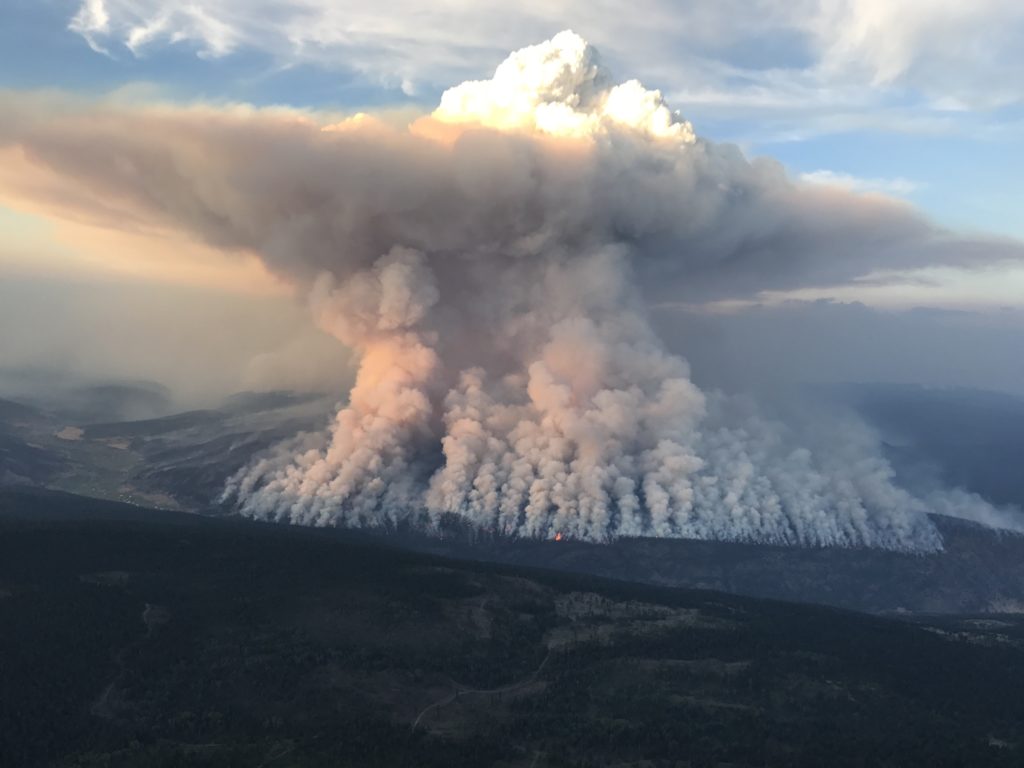
Industry News
News
Elephant Hill fire review calls for Indigenous leadership in wildfire management, recovery
December 13, 2021 By UBC
 Photo by: Paul Simakoff-Ellims.
Photo by: Paul Simakoff-Ellims. Four years after the Elephant Hill megafire burned more than 190,000 hectares and destroyed over 100 homes in B.C.’s south-central Interior region, a new Indigenous-led report is recommending fundamental changes to the way wildfire management and post-fire recovery is conducted in B.C.
The report notes that the wildfire could have been better managed if provincial agencies had engaged the affected Indigenous communities more actively, and earlier in the process.
“There was widespread frustration that Secwépemc knowledge of fire and their territories was largely ignored, hindering effective wildfire response,” says report co-author Sarah Dickson-Hoyle (she/her), an ecologist and social scientist and a PhD candidate in the faculty of forestry at UBC.
Dickson-Hoyle worked closely with the Secwepemcúl’ecw Restoration and Stewardship Society (SRSS) to prepare the report. The society, founded by eight Secwépemc First Nation communities directly impacted by the Elephant Hill wildfire, has been actively working to pursue landscape recovery and restoration throughout their territories.
“Our Secwépemc communities manage, protect and revitalize our tmicw (lands) through unity and Secwépemc values and law. Our laws and way of life comes from our connection to timcw. Take care of the land, the land takes care of us,” says Angie Kane (she/her), chief executive officer of the society. “It is our cultural responsibility to ensure we leave a legacy of regenerated lands, enriched and thriving forests and biodiversity, healthy and abundant wildlife, clean air and water for future generations.”
The report also highlights the success of recovery efforts in the area, thanks to a new collaboration between the provincial government and the Secwépemc communities.
“The Joint Leadership Council was formed in the aftermath of the fire and provided strategic direction to provincial and community technical staff. It acted as a governing body for recovery,” says Sarah Dickson-Hoyle. “As a result, Secwépemc communities played a central role in everything from reforestation to post-fire archaeology, while also building trust and strong relationships with government.”
However, the report also points to significant challenges such as a lack of investment in long-term capacity building and limited strategic or landscape-level planning. Secwépemc leaders faced barriers in accessing high-level decision makers within government. The collaborative efforts also suffered from conflicting perspectives between Secwépemc communities and the provincial government regarding the scope of “wildfire recovery” activities.
Collaborative recovery
Going forward, the report presents 30 calls to action to improve wildfire management and recovery practices, including:
- Provide long-term funding and capacity building for Indigenous emergency management offices
- Strengthen the role of Indigenous wildfire liaisons
- Establish a provincial framework for land-based wildfire recovery
- Support Indigenous communities in jointly developing and implementing landscape-level wildfire recovery plans
Dickson-Hoyle prepared the report with Char John, SRSS’s Natural Resource Community Coordinator, under the supervision of UBC forestry professors Dr. Lori Daniels and Dr. Shannon Hagerman. The authors spoke to 54 representatives from Secwépemc First Nations, the provincial government (including B.C. Wildfire Service) and local resource users, and drew on four years of documenting the joint wildfire recovery.
“In the wake of the devastating 2021 wildfire season in B.C., there is a critical need to identify and share these lessons to guide Indigenous-led wildfire recovery,” says Dickson-Hoyle.
“As we face the compounding impacts of climate change, ecological degradation, and ongoing legacies and impacts of colonization on Indigenous communities, Indigenous peoples must be at the forefront of transforming current approaches to fire and landscape management to restore ecological and community wellbeing on our lands,” says Angie Kane of the SRSS.
Click here for key quotes and excerpts from Secwépemc communities. Click here to access the full report.
Print this page